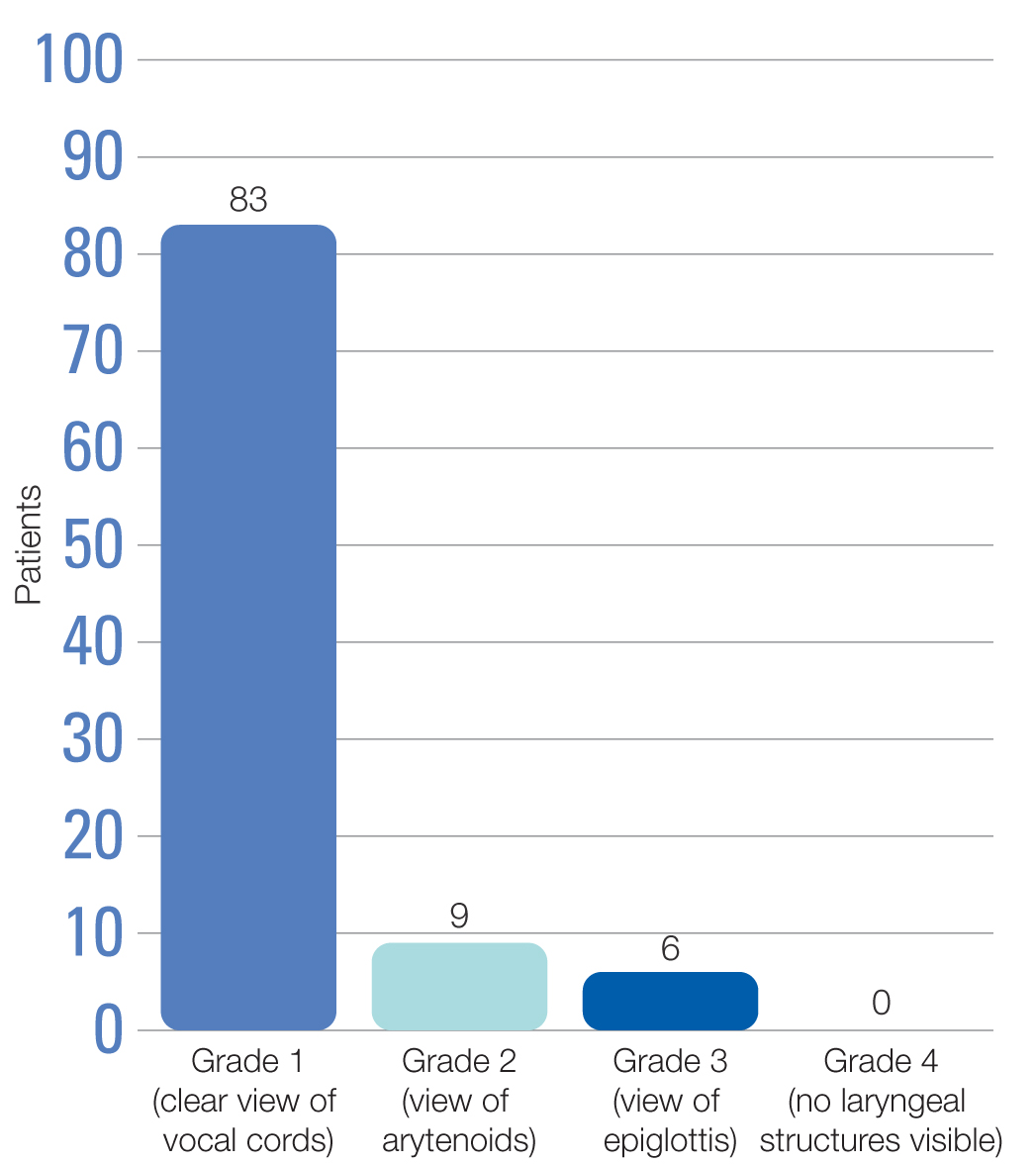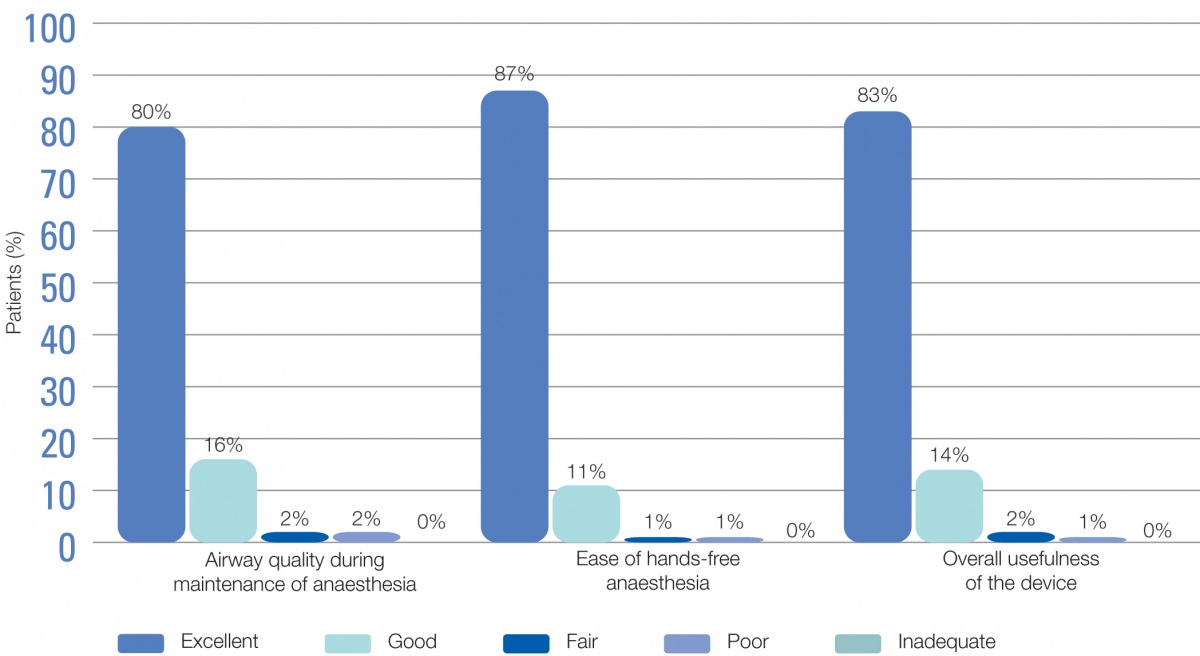Evaluation of the LMA Supreme™ in 100 non-paralysed patients
Authors
Cook T.M. et al.
Publication
Anaesthesia 2009; 64 (5): 555-562.
Summary
- A study to evaluate the performance of the LMA Supreme™ in adult patients undergoing elective surgery requiring anaesthesia
- The LMA Supreme™ was successfully inserted and ventilation was possible in all of the study participants
- The LMA Supreme™ allowed optimal controlled ventilation and its use was associated with very few manipulations or complications
Objectives:
- To evaluate the performance of the LMA Supreme™ in adult patients undergoing elective surgery requiring anaesthesia
Method:
- Eligible patients were required to be American Society of Anesthesiologists class 1-3 and have normal airways
- The main outcomes were
- Ease of use
- Quality of airway achieved
- Complications
Results:
- Overall, 44 male and 56 female patients with a median age of 55 years and a median body mass index of 25 kg/m2 were included in the study
- The LMA Supreme™ was successfully inserted and ventilation was possible in all of the study participants
- Insertion was successful on the first attempt in 90% of patients
- A rating of ‘no or minimal resistance’ to insertion was recorded in 87% of patients
- The median insertion time was 18 seconds
- In order to establish a patent airway, 30 airway manipulations (in 22 patients) were required
- Seven patients experienced early complications, all of which were self-limiting (hiccoughs [n=4] and mild laryngospasm [n=3])
- An expired tidal volume of 7 ml.kg –1 was achieved in all patients, as was a square wave capnogram and stable arterial oxygen saturation
- The median airway leak pressure was 24 cm H2O, and exceeded 20 cm H2O in 71% of patients
- Filling of the anterior neck was observed in 99% of patients and the midline of the device remained in the anatomical midline in 98% of patients
- A clear view of the vocal cords was achieved in the vast majority of patients in whom fibreoptic inspection of the airway was possible (Figure 1)
- Passage of a gastric tube via the drain tube was successful on the first attempt in 96 of 98 patients in whom this procedure was attempted
- The LMA Supreme™ was used throughout maintenance of anaesthesia in all patients
- The airway remained patent in 95% of patients
- Thirteen airway manipulations were undertaken in 5% of patients
Figure 1. Fibreoptic view of the airway channel via the LMA Supreme™ (n=98)
- The LMA Supreme™ was well tolerated during emergence from anaesthesia in 98% of patients
- Although two patients developed coughing, no decrease in arterial oxygen saturation was detected
- In four patients, blood was visible on the device following its removal, while one patient had troublesome secretions
- One patient had an episode of minor regurgitation in the absence of aspiration of gastric contents
- According to the participating anaesthetists, ease of use and the usefulness of the device as well as airway quality were ‘excellent’ or ‘good’ in more than 95% of patients (Figure 2)
- In the recovery area, recorded symptoms were mild sore throat (6%) and mild pain on swallowing (2%)
- Recorded symptoms 24 hours post-surgery were mild sore throat (18%), moderate pain on swallowing (1%) and mild vomiting (1%)
Figure 2. Anaesthetists’ ratings of the performance of the LMA Supreme™ (n=100)
Conclusions:
- Insertion of the LMA Supreme™ was successful and allowed optimal controlled ventilation in all patients
- Very few patients required manipulations or experienced complications during the use of the device
- The LMA Supreme™ was well tolerated throughout anaesthesia and emergence, and few patients experienced side effects following its use

